AWE USA 2021 Day One: “Metaverse Shmetaverse”
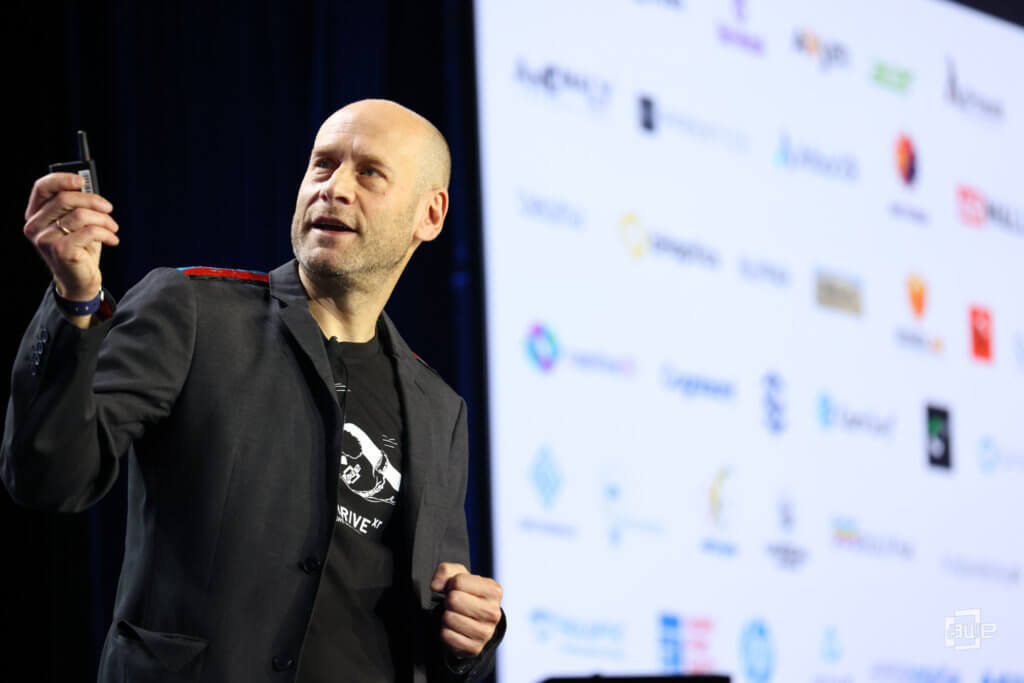
Tuesday, November 9, was the first day of AWE USA 2021, including keynotes from Ori Inbar and John Hanke, panel discussions, and of course, company announcements. If it could be summed up in a single word, that word would, of course, be “metaverse” – love it, hate it, or both, almost everyone on stage used it at least once.
Our classic events disclaimer first: There was too much going on for everything to get covered – including some things that we would have really liked to have covered.
Marathon Session on the Main Stage
The day started off with three powerhouse speakers on the main stage: AWE founder Ori Inbar, Niantic CEO John Hanke, and Qualcomm’s VP and GM of XR Hugo Swart.
Ori Inbar’s State of XR, AWE.LIVE
Perhaps nobody has been looking forward to the return of in-person AWE more than Inbar himself, and his excitement was clear on the stage.

“Thank you all for joining us – in here, out there. People joining us on AWE.LIVE, I wish you could feel the energy and smell the hand sanitizer,” said Inbar. “The XR community is back together like a family. I’m so grateful for all you had to go through to get here.”
Inbar’s State of XR report closely followed and it echoed a number of the sentiments presented independently by speakers interviewed by ARPost in advance of the conference. In particular, that XR mass adoption is finally upon us.
“Entering the mainstream is a new experience for us, but with great power comes great responsibility,” said Inbar. “My plea to you today is to put the powers of XR to good use… Fight diseases. Fight climate change. Fight inequality and hate.”
Inbar shifted to a lighter note with a game that he called “Metaverse or Shmetaverse” that involved reading a trend or application in XR and asking the audience to respond with whether it was good (“metaverse”) or bad (“shmetaverse”). There were a lot of tied votes, and masks admittedly made it difficult to tell the difference between the two responses.
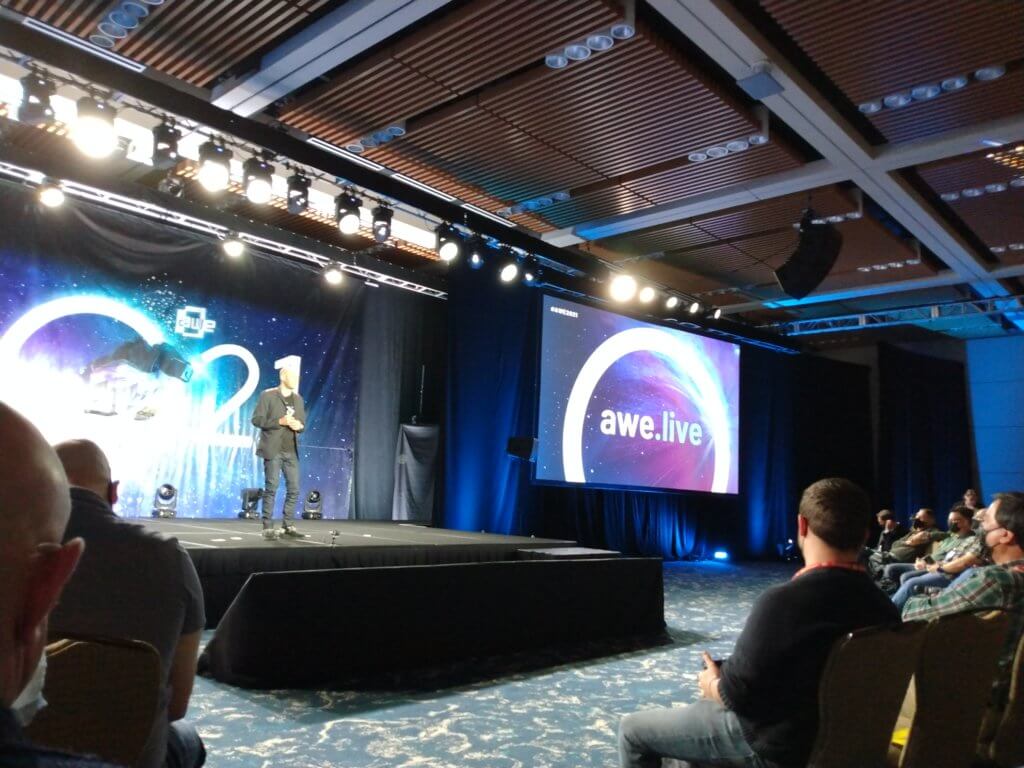
Finally, Inbar announced AWE.LIVE, an “always-on platform” for the XR community that Inbar hopes will “extend the momentum” of the AWE conference year-round.
John Hanke Talks Lightship, Announces Niantic Ventures
Following Inbar, John Hanke took the stage amid ongoing excitement for Pickmin Bloom, as well as the knowledge that the Lightship ARDK had just gone live. Hanke picked up the theme of responsibility from Inbar.
“I really think we’re having a moment right now. AR, XR are really at the center stage and all of you are at the center of that,” said Hanke. “We are at the precipice of one of those big platform changes that happen every once in a great while in tech.”2
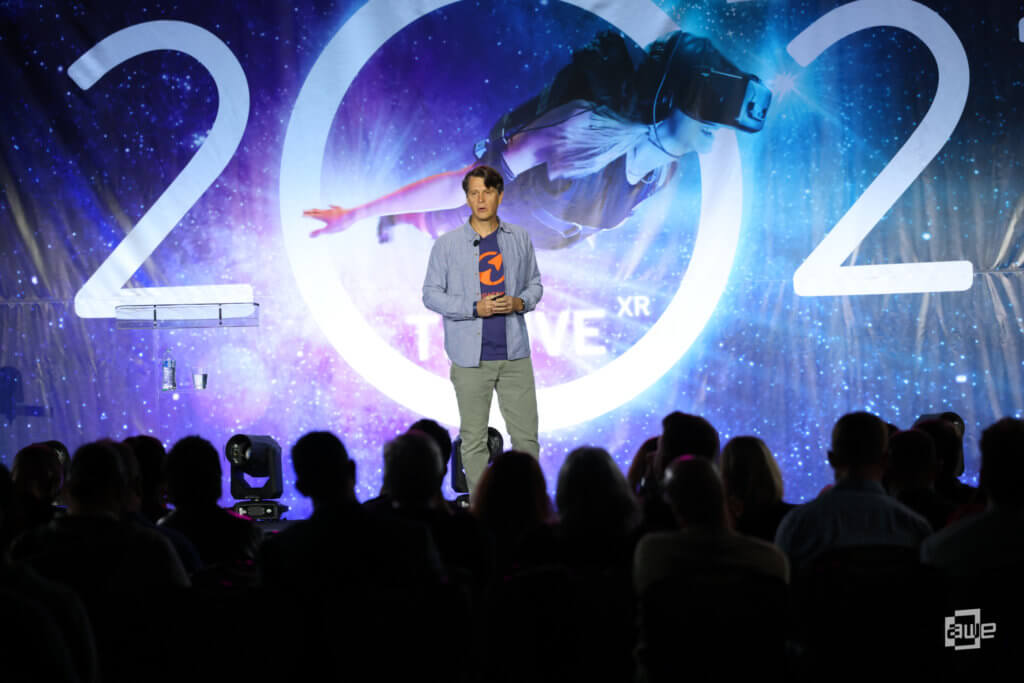
That platform change is toward the “real-world metaverse”. Hanke believes that this metaverse is the culmination of 50 years of tech development, but he doesn’t believe that it has to end the way that it often does in science fiction.
“We think we can use this technology not to escape from reality into VR but to build a better reality – a better world,” said Hanke. “This is an opportunity to shape these technologies; decide how much humanity, how much human values gets incorporated.”
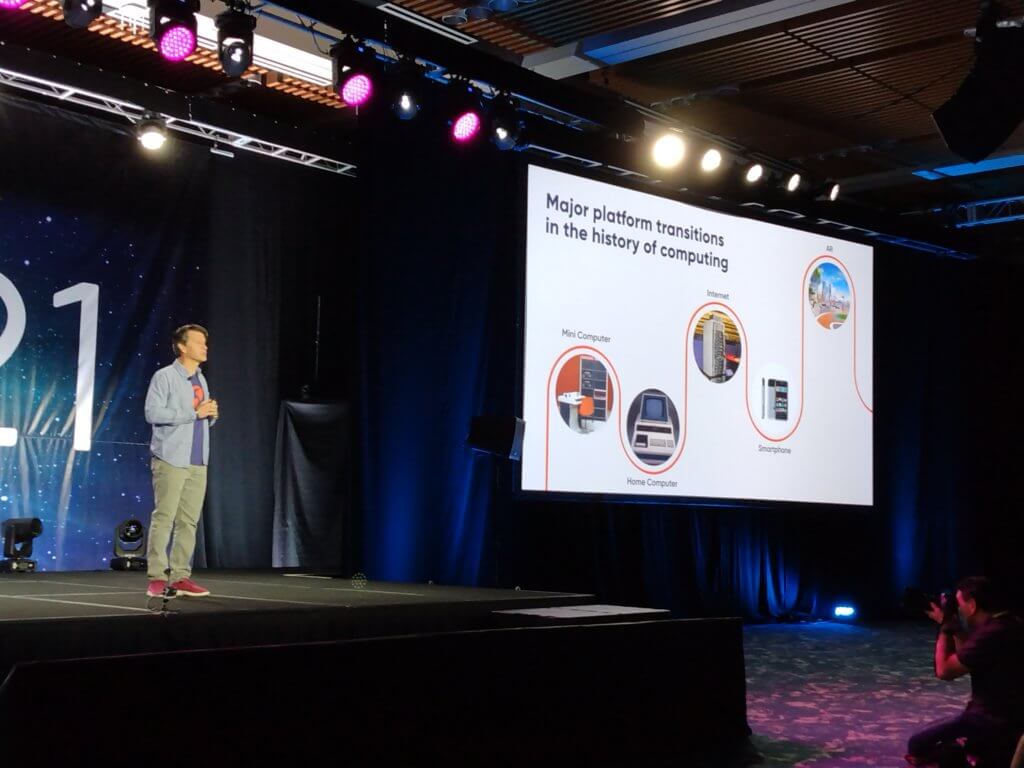
This was the introduction to the Lightship ARDK, which went live the day before, giving developers access to many of the tools that Niantic has used to build its successful apps. Hanke described it as being composed of a real-time mapping engine, semantic understanding, and the ability to create multi-user experiences, again in the context of responsibility:
“The decisions that we make now are going to shape the future that we pass on to future generations… Whether we allow that to evolve into the dystopia that we all know it could be or whether we take proactive steps to prevent that – that’s a collective decision.”
Finally, Hanke introduced Niantic Ventures, an organization for funding creators contributing to a shared vision of the real-world metaverse.
Hugo Swart Announces Clay Acquisition, Spaces, Developer Program
Following Hanke, Swart took the stage full of announcements. Qualcomm has acquired hand tracking technology company Clay AIR. But, that’s not all. Swart next announced the release of Snapdragon Spaces, an XR developer platform for creating experiences for head-worn devices.
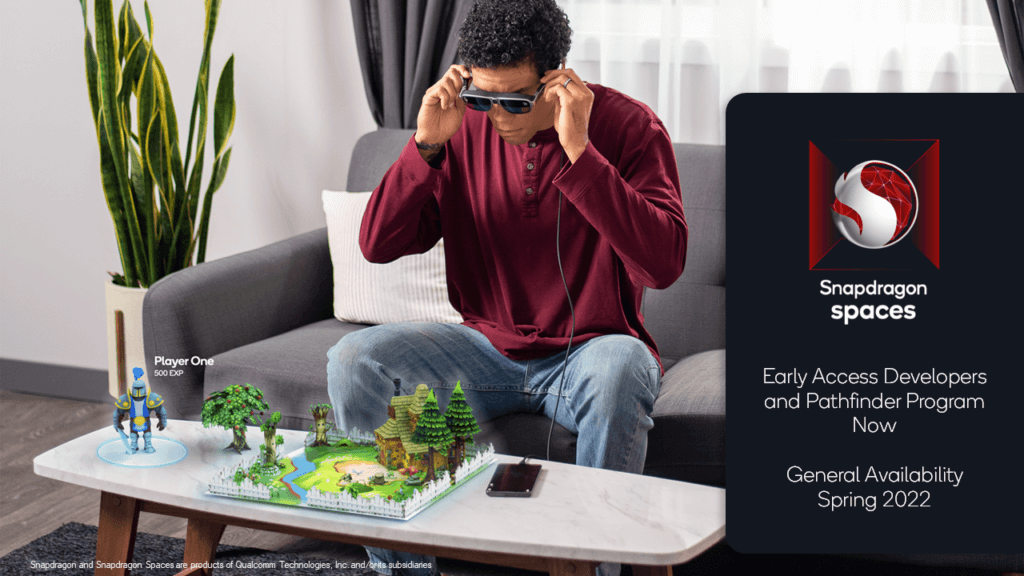
Lenovo has the first head-worn device supporting the software, and Niantic is a collaborator. Other companies using or contributing to the initiative include Epic Games, Felix & Paul Studios, DT, and Resolution Games, who are launching a division dedicated to AR games. The full rollout is scheduled for spring of next year, but there is a Pathfinder Program for developers.
More Announcements From 8th Wall, Chicken Waffle
Not all of the announcements from day one happened during the first few sessions. Some of them took place in other panels and expert talks.
Lots Happening for Chicken Waffle
In a joint panel with Spree Interactive on games and social experiences, Chicken Waffle CEO Finn Staber dropped a slew of announcements, including an indie creators fund, the game “Baby Hands” (which won the Auggie for “Best in Show” in 2019) coming to PSVR this Thanksgiving, and the launch of XR Swim.
Staber described XR Swim as being “like Steam but for VR.” The site includes games, an NFT showcase, and even XR entertainment like Failed to Render.
8th Wall’s Reality Engine and Discovery Hub
Two back-to-back 8th Wall sessions featuring three speakers across two stages introduced the world to the Reality Engine. The new engine, which replaces 8th Wall’s existing AR Engine, enables WebXR experiences that work across mobile devices, desktops, or head-mounted displays including VR and MR headsets.
VP of Product Tom Emrich and CEO Eric Chutorian Murphy called the Reality Engine “the new responsive web” as it enables “metaversal deployment” of XR experiences that only need to be made and published once. Emrich further said that this is important at the moment because all of these different devices are being concurrently used.
“With this new device category, we’re not trying to replace necessarily, but to add to the user’s constellation of devices,” said Emrich.
To go down a more technical rabbit hole, event attendees followed 8th Wall’s Lead Product Designer Rigel Benton in a separate talk in a separate stream of the conference. Benton described the Reality Engine as fixing reach – “the first problem to solve when building the metaverse.”
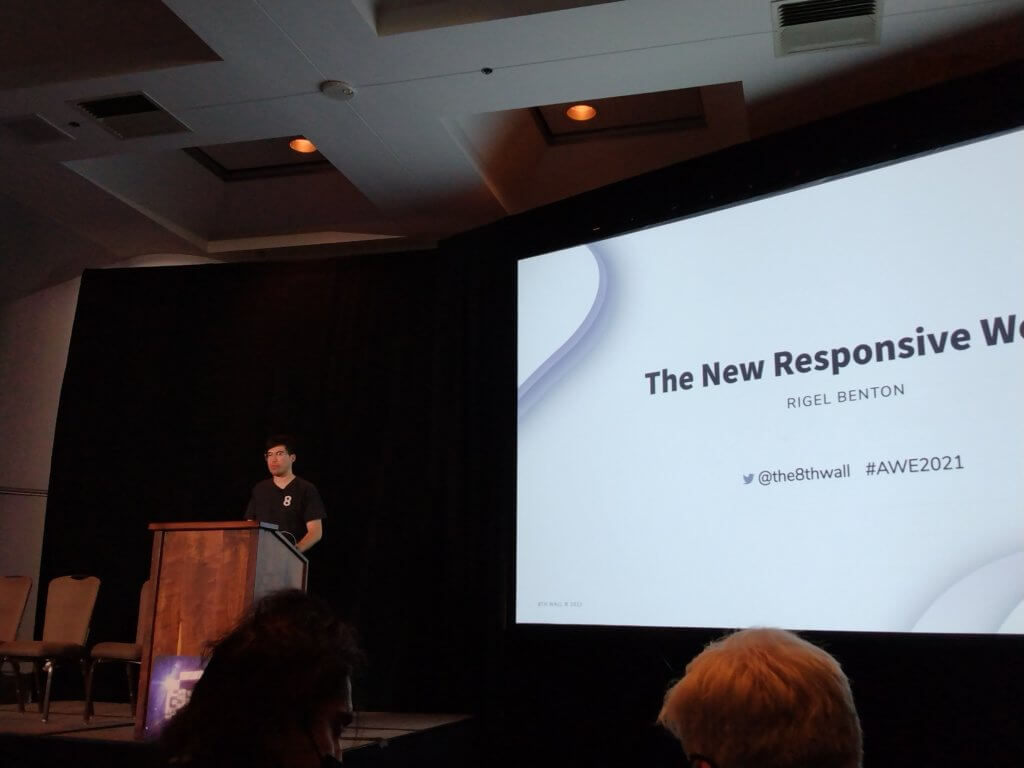
“Whenever we’re thinking about what the next generation of the web looks like, we have to accommodate new devices in our design,” said Benton. “The Reality Engine allows you to build a web AR product and then wherever you publish it, it automatically configures to those different form functions and input methods.”
Benton also introduced 8th Wall’s new “Discover Hub,” a feature for users to explore 8th Wall-powered experiences.
Shaping the Metaverse
While announcements are some of the most exciting moments at AWE, that’s not what the whole conference is about. The conference is also a place to go to learn from leaders in the industry.
One particular panel, “Shaping the Metaverse”, consisted of futurist Cathy Hackl, author John Buzzell of Epic Games and Unreal Engine, Upland CEO Dirk Lueth, Christina Wootton of Roblox, and Lindsey McInerney of AB InBev. The panel discussion examined the role of gaming in the metaverse, the importance of NFTs, identity, and expression, and more.
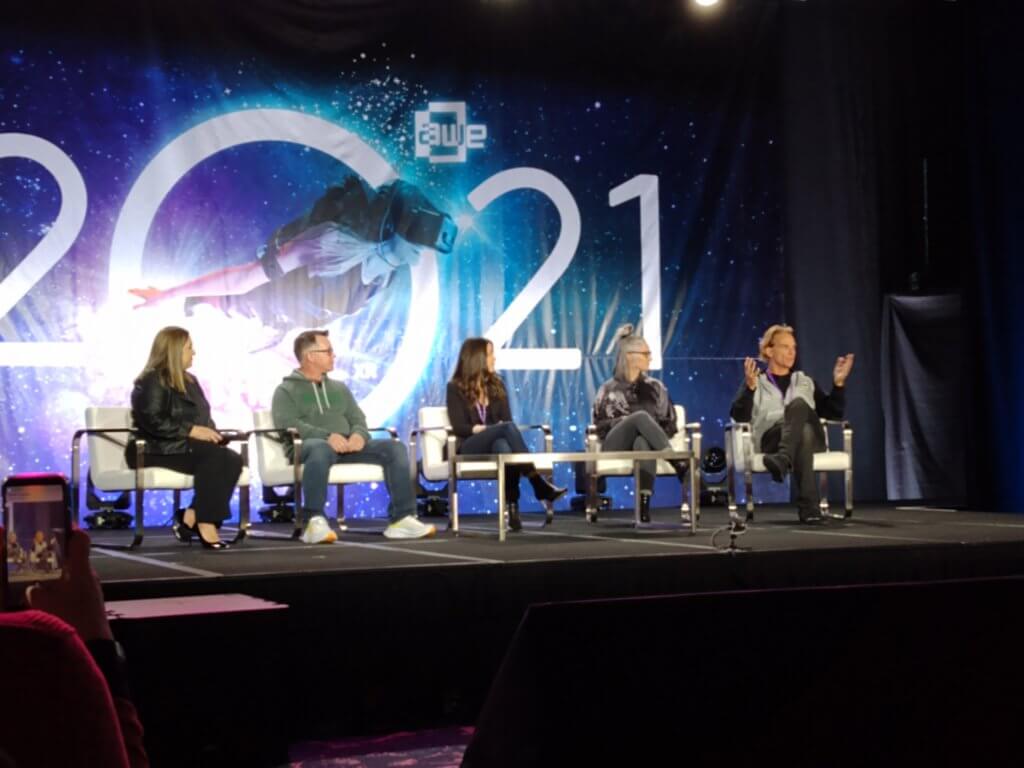
“Gaming pioneered so many of the concepts that we’re talking about,” Buzzell said of avatars, item inventories, and other facets of online interaction. “These are all things that are going to permit us to have these different experiences.”
Talking about avatars led to talking about expression and fashion.
“As people begin to spend more time online, their virtual identity can become more important than their physical identity,” said Wootton. “There’s a larger element of fashion that I look forward to people continuing to push and explore.”
Talking about expression and fashion led to talking about NFTs and ownership.
“In this world, I represent myself with certain goods like the clothes I wear or the car I drive,” said Lueth. “NFTs allow you to do that virtually because you can truly own them.”
And NFTs are a conversation topic all their own.
“Today, a lot of the NFTs that you see are people dropping art… I don’t think that’s the future of NFTs, I think that’s where they are now,” said McInerney. “In the future, NFTs will provide ownership for any item that you own in that digital experience.”
If Called by Any Other Name
Whether it was shaping the metaverse, building it, or defining it, the word definitely kept coming up. A number of speakers agreed that while we might not all love the word, it has been a part of the increasing adoption of XR devices and applications that we’re seeing now.
And, as Emrich expressed in his talk, in the end, the users and the media choose the words that really end up sticking. So at least for now, we’ll probably keep saying “metaverse.” But tomorrow, who knows – it could be “shmetaverse.”
This article was originally published on arpost.co